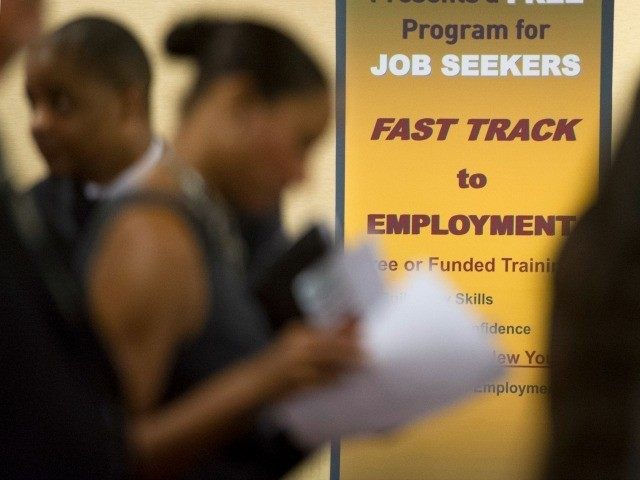How does unemployment go up if there was healthy job creation? Both things supposedly happened last month. As the Wall Street Journal’s headline juxtaposition puts it, “U.S. Adds 257,000 Jobs; Unemployment Ticks Up to 5.7%.”
This goes to prove that the points made by Gallup CEO Jim Clifton in his case for treating the government’s official labor statistics — or, more precisely, the use made of them by politicians and the media — as misleading.
It’s largely a result of the workforce growing as the long-term unemployed begin search for work again. If the standards held by dishonest media and Obama Administration officials for the past six years were employed today, the only thing you’d be hearing was panic over the unemployment rate rising – because when it has come down in the past, even when all of the reduction in the headline U-3 unemployment rate came from people giving up and dropping out of the workforce, we were told to celebrate it as good news. We weren’t supposed to consider the size of the workforce at all.
Also, the Journal tells us that “in a closely-watched development, the average hourly wage of private-sector workers rose 0.5% from December, above the market expectation of a 0.3% rise. Wages are up 2.2% over the past year, a sluggish pace historically but a notable pickup from prior months.”
Did you hear a lot about those sluggish wages during prior months, or especially prior years? Of course not. You were told to pop the champagne corks every time the U-3 unemployment rate came down a tenth of a point, even when it was entirely due to full-time jobs being destroyed and replaced by a larger number of part time jobs. That’s happened very frequently over the past few years, but it was never considered news-worthy. You had to dig pretty deep into the Bureau of Labor Statistics numbers to find it.
The new report is considered strong enough to make the Fed think about raising interest rates again, especially given that January normally brings a softer post-holiday employment report, although the Journal notes that some analysts think the rather stunning fall of GDP growth to 2.6% at the end of 2014 should curb enthusiasm for declaring a full-blown recovery at last.
One of the problems spotlighted by the Gallup CEO is that monthly job reports are volatile, based in large measure on a household survey that bounces around a lot, and subject to big revisions over the next two months as data keeps trickling in, but each report tends to be treated as a finished product of pure good or bad news. It takes months to establish trends. Indeed, the January report shows considerably slower job growth than the upwardly revised totals for from November and December – the trend is down, although a good deal of that is to be expected after the holiday shopping season ends.
It’s said that wage growth comes not only from the creation of more full-time jobs, but the shift of labor into more of a seller’s market. When jobs are scarce, wages are weak because “employers have their pick among millions of unemployed workers,” as the WSJ puts it. You haven’t heard that argument much until now… because the corollary of that statement is that soft wages are directly related to high unemployment, and Democrat rhetoric staunchly maintains that soft wages are mostly a result of greedy employers underpaying their deserving employees, a problem that can be addressed only by jacking up the minimum wage.
If wages are strengthening because the workforce is finally growing, then Barack Obama’s workforce-diminishing policies are the reason wages were weak. Artificially raising wages by government fiat is likely to change the employment equation again, and not in a good way. The workforce still has a long way to go before it’s truly healthy – it’s still very close to a 30-year low – and the demographic spread remains a troubling indicator that young people, and the long-term unemployed, are having a tough time getting into the game.
What’s the best way to measure unemployment? There’s no easy answer, because some of the much-criticized estimate work performed by the BLS, such as the household survey, is necessary to create a more complete picture than we could gain from the hardest of hard data. We probably ought to stop taking job reports as gospel until they’re two months old, and the last of the big revisions are in place, but that’s never going to happen in a voracious 24-hour news cycle. The media should pay more consistent attention to factors such as workforce size and average wages.
The headline BLS numbers aren’t useless – it’s relevant to know what percentage of the most active segment of the workforce can find work, as the U-3 statistic tells us – but they should always be interpreted in the context of other data. Even the workforce percentage isn’t an all-encompassing truth bomb on its own. What would a truly optimum workforce level be, given that some people aren’t going to look for work? Why aren’t those people looking for a job? The employment picture is complicated. The greatest disservice provided by politicized media is the pretense of simplicity.

COMMENTS
Please let us know if you're having issues with commenting.